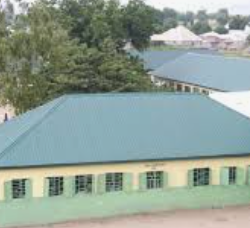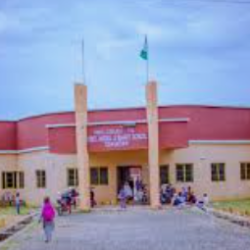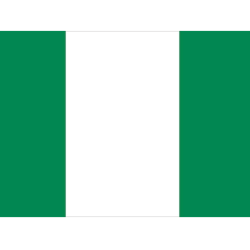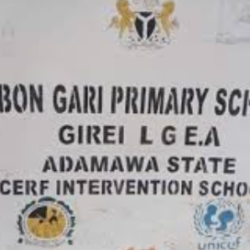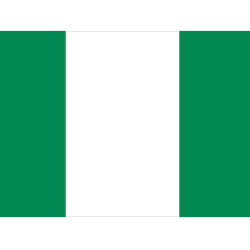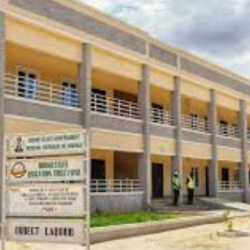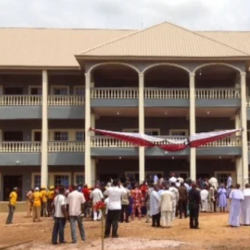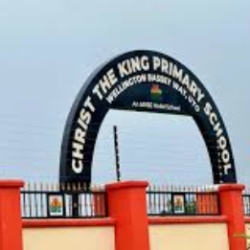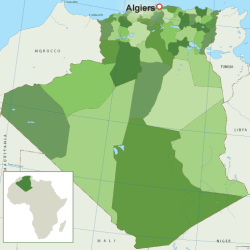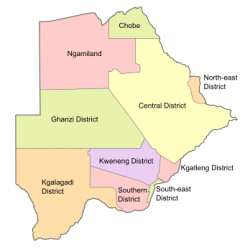Algeria, the largest country in Africa in terms of land area, is divided into 58 provinces (wilayas). These provinces serve as the primary administrative divisions of the country, each governed by a wali (governor) appointed by the state. The provinces are further subdivided into districts (daïras) and communes.
List of all 58 provinces (wilayas) of Algeria
- Adrar
- Chlef
- Laghouat
- Oum El Bouaghi
- Batna
- Béjaïa
- Biskra
- Béchar
- Blida
- Bouira
- Tamanrasset
- Tébessa
- Tlemcen
- Tiaret
- Tizi Ouzou
- Algiers (Alger)
- Djelfa
- Jijel
- Sétif
- Saïda
- Skikda
- Sidi Bel Abbès
- Annaba
- Guelma
- Constantine
- Médéa
- Mostaganem
- M’Sila
- Mascara
- Ouargla
- Oran
- El Bayadh
- Illizi
- Bordj Bou Arréridj
- Boumerdès
- El Tarf
- Tindouf
- Tissemsilt
- El Oued
- Khenchela
- Souk Ahras
- Tipaza
- Mila
- Aïn Defla
- Naâma
- Aïn Témouchent
- Ghardaïa
- Relizane
- El M’Ghair
- El Menia
- Ouled Djellal
- Bordj Baji Mokhtar
- Béni Abbès
- Timimoun
- Touggourt
- Djanet
- In Salah
- In Guezzam
In 2019, Algeria expanded the number of provinces from 48 to 58 to improve governance, decentralize administration, and provide better services to remote regions. This change especially benefited southern desert areas, which were previously managed under vast and challenging territories.
Historical Background of Algeria’s Administrative Divisions
Pre-independence provincial structure
During French colonization, Algeria’s administrative system was heavily influenced by the French model. The country was divided into a limited number of departments, primarily focused on the northern regions.
The shift from 15 to 48 provinces
After gaining independence in 1962, Algeria gradually expanded its administrative divisions. By 1984, the number of provinces increased to 48, reflecting population growth and regional development.
The 2019 reform: Expansion to 58 provinces
In December 2019, the Algerian government introduced a major reform that added 10 new provinces. These new wilayas were carved out of existing ones, particularly in the southern desert, to bring administration closer to citizens and improve infrastructure development.
Overview of Algeria’s 58 Provinces
Algeria’s provinces vary greatly in geography, climate, and economy.
Provinces by Geographic Region
Northern Coastal Provinces
This region includes Algiers, Oran, Bejaia, Annaba, Skikda, Tipasa, and Tlemcen. These provinces are known for their Mediterranean climate, fertile land, and major ports.
Central Provinces
Central Algeria includes Blida, Medea, Bouira, Djelfa, and M’Sila. This region connects the coast to the highlands and plays a vital role in agriculture and trade.
Southern Desert Provinces
The southern provinces, such as Tamanrasset, Illizi, In Salah, and Djanet, cover vast areas of the Sahara Desert. Rich in natural resources, they are crucial for Algeria’s oil and gas industry.
Detailed List of Algeria Provinces
Here is the full updated list of Algeria’s 58 provinces, divided into four groups:
Provinces 1–15
Adrar, Chlef, Laghouat, Oum el Bouaghi, Batna, Bejaia, Biskra, Bechar, Blida, Bouira, Tamanghasset, Tebessa, Tlemcen, Tiaret, Tizi Ouzou.
Provinces 16–30
Algiers, Djelfa, Jijel, Setif, Saïda, Skikda, Sidi Bel Abbes, Annaba, Guelma, Constantine, Medea, Mostaganem, M’Sila, Mascara, Ouargla.
Provinces 31–45
Oran, El Bayadh, Illizi, Bordj Bou Arréridj, Boumerdès, El Tarf, Tindouf, Tissemsilt, El Oued, Khenchela, Souk Ahras, Tipasa, Mila, Ain Defla, Naama.
Provinces 46–58
Ain Temouchent, Ghardaia, Relizane, El M’Ghair, El Menia, Ouled Djellal, Bordj Baji Mokhtar, Béni Abbès, Timimoun, Touggourt, Djanet, In Salah, In Guezzam.
Capitals and Major Cities of Algeria Provinces
Each Algerian province has a capital city, often sharing the same name as the province itself. Some of these cities are internationally known for their history, culture, or economic importance.
- Algiers (Alger) – The capital of both Algeria and the Algiers Province. It is the political, economic, and cultural hub of the country.
- Oran – Known as the “second capital,” Oran is a major port city famous for Rai music and a vibrant economy.
- Constantine – Nicknamed the “City of Bridges,” Constantine is an ancient city with a rich Roman and Arab history.
- Tamanrasset – Capital of the Tamanrasset Province, located deep in the Sahara. It is a key crossroads for trade routes and Tuareg culture.
- Ghardaia – A UNESCO World Heritage Site, known for its traditional M’zab Valley architecture.
These provincial capitals act as administrative centers and often serve as gateways to the surrounding rural or desert areas.
Economic Importance of Different Provinces
Algeria’s provinces are not only geographically diverse but also economically distinct.
Agricultural Provinces
- Mitidja Plain (Blida, Medea, Tipasa): Fertile lands producing citrus, olives, and cereals.
- Setif and Constantine: Major grain-producing areas.
- El Oued: Famous for underground irrigation systems supporting date palm cultivation.
Industrial and Commercial Provinces
- Algiers: The financial and commercial capital with industries ranging from construction to banking.
- Oran: Home to petrochemical plants, trade centers, and international shipping routes.
- Annaba: Known for steel production and heavy industries.
Oil and Gas Producing Provinces
- Ouargla, Hassi Messaoud, Illizi, In Salah: Rich in hydrocarbons, supplying most of Algeria’s oil and gas exports.
- Hassi R’mel (Laghouat Province): One of the largest natural gas fields in the world.
These resources play a crucial role in Algeria’s economy, contributing to over 90% of export revenues.
Cultural and Historical Significance of Provinces
Algeria’s provinces are deeply rooted in history and cultural traditions.
- Tizi Ouzou and Bejaia: Heartland of Kabyle Berber culture, known for handicrafts and music.
- Tlemcen: Famous for Andalusian architecture, ancient mosques, and silk weaving.
- Tipasa: Hosts Roman ruins listed as a UNESCO World Heritage site.
- Timimoun: Known as the “Red Oasis” for its unique Saharan architecture and folklore.
- Djanet: Gateway to Tassili n’Ajjer National Park, home to prehistoric cave paintings.
Demographics and Population Distribution
Algeria’s population exceeds 45 million, with a majority concentrated in the northern coastal provinces.
- Densely populated provinces: Algiers, Oran, Constantine, Blida, Setif.
- Moderately populated provinces: Djelfa, Batna, Chlef, M’Sila.
- Sparsely populated provinces: Southern provinces like Tindouf, Illizi, In Guezzam, and Bordj Baji Mokhtar, where vast deserts dominate.
The urbanization rate is high, with more than 70% of Algerians living in cities. However, rural communities remain vital for agriculture and cultural heritage.
Challenges in Provincial Governance
Despite progress, Algeria’s provinces face several challenges:
- Infrastructure gaps in remote desert provinces.
- Economic inequality between wealthy oil-rich provinces and agricultural ones.
- Youth unemployment, especially in rural areas.
- Environmental issues, including desertification, water scarcity, and coastal pollution.
The 2019 creation of 10 new provinces aimed to address some of these challenges by decentralizing governance and bringing services closer to citizens.
Recent Developments and Future Outlook
Algeria is actively working on:
- Decentralization reforms to empower local administrations.
- Economic diversification beyond oil and gas, focusing on renewable energy, tourism, and agriculture.
- Infrastructure projects such as the East-West Highway, Trans-Saharan Road, and new railways linking provinces.
- Cultural tourism promotion, especially in southern provinces like Djanet, Tamanrasset, and Timimoun.
The new provinces will likely see increased investment in education, healthcare, and transportation in the coming years.
FAQs about Algeria Provinces
1. How many provinces does Algeria have today?
Algeria currently has 58 provinces (wilayas) after the 2019 administrative reform.
2. Which is the largest province in Algeria by area?
The largest is Tamanrasset Province, covering over 550,000 km² in the Sahara Desert.
3. Which province is the most populated?
Algiers Province is the most populated, with over 3 million residents.
4. What are the newest provinces of Algeria?
The 10 provinces added in 2019 are: El M’Ghair, El Menia, Ouled Djellal, Bordj Baji Mokhtar, Béni Abbès, Timimoun, Touggourt, Djanet, In Salah, and In Guezzam.
5. Which provinces are richest in oil and gas?
Ouargla, Illizi, Laghouat, and In Salah are Algeria’s key hydrocarbon provinces.
6. Do provinces in Algeria have cultural autonomy?
While governed by the central state, provinces preserve strong cultural identities, especially among Berber-speaking regions like Kabylie and Tuareg areas in the south.

The 58 provinces of Algeria form the backbone of the nation’s administrative, economic, and cultural life. From the bustling streets of Algiers and Oran to the serene oases of Timimoun and Djanet, each province contributes uniquely to the country’s diversity.
The 2019 expansion from 48 to 58 provinces was a landmark decision, aiming to strengthen governance and bring development closer to remote communities. As Algeria moves forward, its provinces will continue to play a vital role in shaping the nation’s future through economic growth, cultural preservation, and improved governance.
